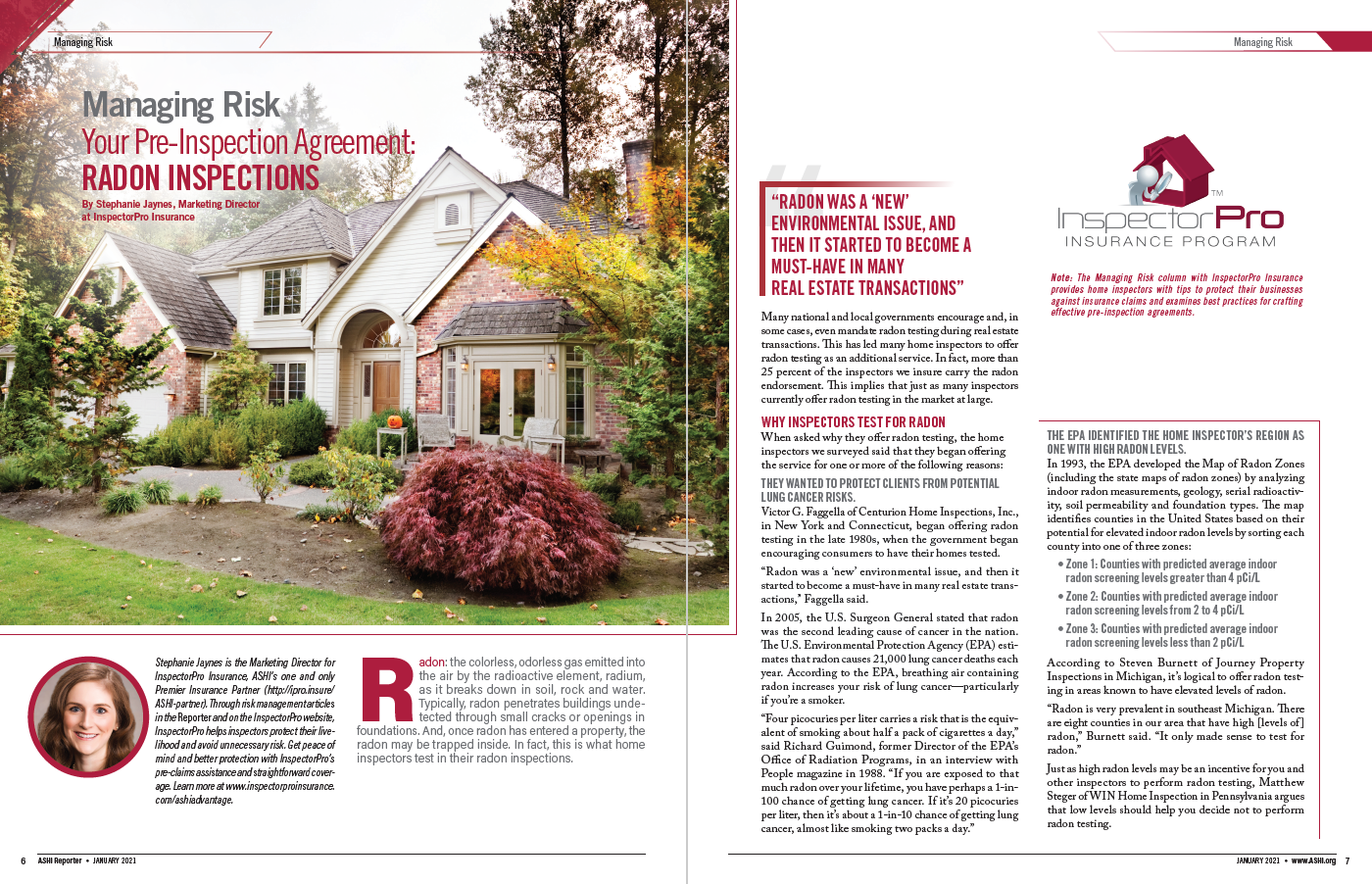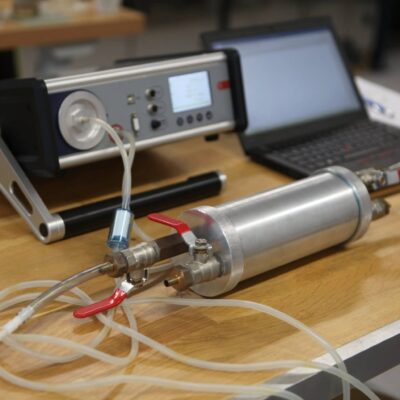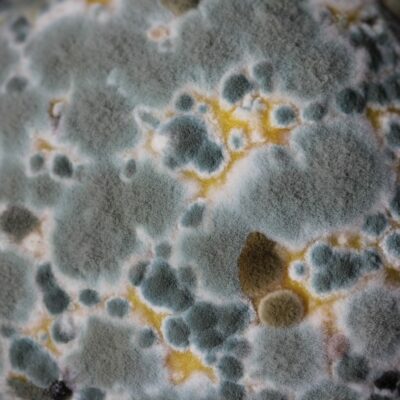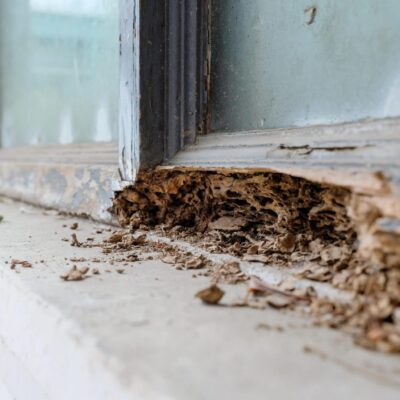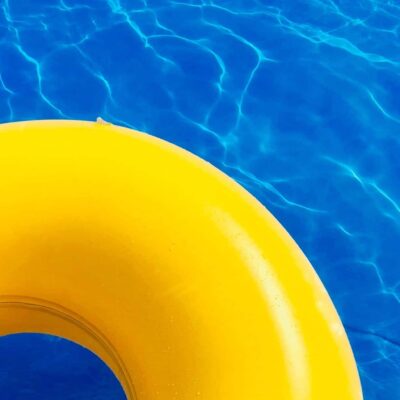Radon inspections: What you need to know
Last Updated November 27, 2023

Many home inspectors choose to offer radon testing as an additional service, but why is this the case? Radon: the colorless, odorless gas emitted into the air by the radioactive element, radium, as it breaks down in soil, rock, and water. Typically, radon enters buildings through small cracks or openings in foundations undetected. And, once radon has entered a property, the radon may be trapped inside. In fact, this is what home inspectors test in their radon inspections.
More evidence may be needed to fully grasp the relationship between radon and lung cancer (more below). However, the EPA maintains that radon is a cause for concern. In 2017, the EPA proclaimed January as National Radon Action Month, urging people to “Test, Fix, Save a Life.”
Since testing is the only way to find a home’s radon levels, the EPA and Surgeon General suggest that home buyers and sellers test all homes below the third floor. If radon levels of four picocuries per liter (4 pCi/L) or higher are present—which the EPA believes nearly one in every 15 households do—then the EPA urges to take corrective measures, including setting up radon-reduction systems.
Many governments encourage and, in some cases, even mandate radon testing during the real estate process. This has led many home inspectors to offer radon testing as an additional service. In fact, over a quarter (25 percent) of the inspectors we insure carry the radon endorsement. This implies that just as many inspectors currently offer radon testing in the market at large. (More on endorsements later.)
In this article, we explore why 10 home inspectors chose to offer radon testing and what advice they have for home inspectors thinking about offering the service.
Why inspectors test for radon.
When asked why they offer radon testing, the 10 home inspectors we surveyed said that they offered the service for one or more of the following reasons:
1. They wanted to protect clients from potential lung cancer risks.
The labels “silent killer” and “cancer-causing radioactive gas” affect public opinion and discourse about radon. But how did radon amass such a bad reputation?
While radon’s effects on miners was studied for decades prior, testing within homes began in Pennsylvania in 1984. While the Limerick Nuclear Power Plant was being built, an engineer named Stanley Watras entered and tripped a radiation detector. This monitor measured unsafe radiation levels for plant workers. Three things stood out to safety officials:
- When he set the monitor off, Watras was coming to, not going from, the Plant.
- Due to the construction, the Plant was not currently operating.
- No other workers were contaminated.
Given this, Plant officials were certain that Watras had not been exposed to the radon at work. So, they took measurements of the Watras’ home. To their alarm, they found radiation levels more than 200,000 times above the level sanctioned for people living close to nuclear power plants.
Believing that Watras’ exposure to radon in his home may not be rare, the Environmental Protection Agency (EPA) conducted a survey of 10 states. During the 1986 survey, the EPA tested 11,600 homes for radon. The results: one of every five homes tested contained health-threatening radon levels. The EPA declared radon a national problem.
A case for home inspectors testing radon and advising mitigation.
Shortly after, Congress passed the Radon Program Development Act of 1987 (also known as the Indoor Radon Abatement Act or Radon Act 51), which set a national goal that “the air within buildings be as free of radon as the ambient air outside of buildings”—meaning four tenths of a picocurie per liter (0.4 pCi/L).
In 1989, the Act also dictated the EPA produce the guide “A Citizen’s Guide to Radon,” now titled “Home Buyer’s and Seller’s Guide to Radon.” One of the guide’s main goals: to inform the public about the health risks of radon.
Government influence on inspectors.
Victor G. Faggella of Centurion Home Inspections, Inc. in New York and Connecticut began testing for radon in the late 1980s when the government began urging people to have their homes tested.
“Radon was a ‘new’ health issue and started to become a must-have in many real estate transactions,” Faggella said.
In 2005, the Surgeon General of the United States stated that radon is the second-leading cause of lung cancer in the nation. The EPA estimates that radon causes about 21,000 lung cancer deaths each year. According to the EPA, breathing air that contains radon, inflates your risk of lung cancer—chiefly if you’re a smoker.
“Four picocuries per liter carries a risk that is equal to smoking about half a pack of cigarettes a day,” said Richard Guimond, Former Director of the EPA’s Office of Radiation Programs, in an interview with People Magazine in 1988. “If you are exposed to that much radon over your lifetime, you have perhaps a 1-in-100 chance of getting lung cancer. If it’s 20 picocuries per liter, then it’s about a 1-in-10 chance of getting lung cancer, almost like smoking two packs a day.”
For Larry Young of HomeTek Inspection Services in North Carolina, concern for his clients’ health is his main reason for radon testing.
“Lung cancer is a serious issue, and if it can help my clients in a way, I will offer radon testing,” Young said.
Before offering radon testing, make sure you have the right insurance and endorsements.
Skepticism around radon-related lung cancer data.
Critics of the EPA’s research argue that the studies inflate the number of radon-related illnesses and deaths. In 2017, Harvard University’s Department of Environmental Health published an article in which they argued that the EPA’s radon-induced lung cancer deaths may be enlarged due to failure to account for diesel engine exposure.
“[The] EPA’s original estimates of fatal risks attributable to radon may be overestimated by 9 percent– 26 percent, after accounting for exposure to diesel in the miner studies originally used to estimate radon risk,” the authors said. “Our best estimates, using updated models and mortality data from 2014, indicate that there could possibly be 12,900–15,900 deaths attributable to indoor radon exposure each year.”
Even the EPA has raised questions about its lung cancer death statistics. According to the New York Times, an EPA official made a statement in 1996, saying the Agency would most likely reduce its estimates of the amount of lung cancer caused by radon gas in homes from 21,000 to 16,000 per year. However, despite numerous revisions, including the latest in March 2018, the EPA has yet to update the figure in their guide.
Additionally, the EPA’s own guide exposes the largest flaw with its lung cancer death statistic: its inclusion of smokers. Of the 21,000 deaths to radon-related lung cancer that occur each year, the EPA estimates that less than 2,900 (13 percent) occur among non-smokers.
All the same, health risks remain one of the chief concerns of home inspectors testing for radon.
2. The EPA identified the home inspector’s inspection area as one with high radon levels.
In 1993, the EPA developed the Map of Radon Zones by analyzing indoor radon measurements, geology, serial radioactivity, soil permeability, and foundation types. The map identifies U.S. counties based on their potential for elevated indoor radon levels by sorting each county into one of three zones:

Steven Burnett of Journey Property Inspections in Michigan asserts that it’s logical to offer testing in areas known to have high levels of radon.
“Radon is very prevalent in southeast Michigan. There are eight counties in our area that have high [levels of] radon,” Burnett said. “It only made sense to test for radon.”
Brent Stadther of Full Disclosure Home Inspections in Idaho agrees.
“In our area, we have many Zone 1 and Zone 2 areas—areas known to have high radon levels,” Stadther said. “It seemed that many consumers would value the option.”
While Scott Patterson of Trace Inspections in Tennessee was not testing for radon when he lived in Mississippi, he did start testing when he moved to an area with higher radon levels.
“Middle Tennessee has mostly rock a few feet underground, which allows the radon gas to find an easy way out into our atmosphere,” Patterson said.
Low radon levels may mean low demand.
Just as high radon levels may spur you and other inspectors to perform radon testing, Matthew Steger of WIN Home Inspection in Pennsylvania argues that low levels should dissuade you.
“If there’s low demand or if radon’s historically not really an issue in the area, it probably doesn’t make sense to invest in doing radon testing,” Steger said.
As Steger suggests, you may decide that it isn’t good business for you to invest in radon testing. Note that the EPA still suggests that all homes be tested, regardless of location or zone.
3. The home inspector wanted an added source of income.
Laurie Smith of Regional Home Inspection in Missouri saw a surge in demand for radon testing 25 years ago. Realizing that testing could provide further income to her inspection business, Smith began offering radon testing.
Although Dustin Sample of Resolute Home Inspections in Ohio did not begin testing until this past summer, he, too, started due to high demand and interest.

“I wanted to offer radon testing because I was losing a lot of home inspections where radon testing was requested,” Sample said.
Just how much revenue can radon testing bring in?
For every home inspection they performed, the inspectors we surveyed said that as few as 25 percent and as many as 75 percent of clients—for a survey average of 46 percent—opted to add a radon test to their standard inspection.
On average, the inspectors we surveyed charge $140 per radon test with a home inspection and $160 per test without.
So, if a home inspector performed 300 inspections a year and half of them opted into their $150 radon test, that inspector would make $22,500 more in gross revenue.
However, to offer an additional service, like radon testing, home inspectors must make several up-front investments. Common investments include the three Es: education, equipment, and endorsements. In the next section, we explore each investment by type.
Radon testing investments inspectors make.
Education
Steger recommends inspectors begin their education knowing their state’s specific stipulations.
“The first thing is to find out whether the state that the inspector’s in has any special requirements,” Steger said. “Pennsylvania, for example, requires that anybody that does testing or remediation be licensed in PA by the Department of Environmental Protection.”
According to a 2016 report by The Policy Surveillance Program, A LawAtlas Project, 25 states have radon certification laws: California, Connecticut, District of Columbia, Florida, Iowa, Illinois, Indiana, Kansas, Kentucky, Maryland, Maine, Montana, Nebraska, New Hampshire, New Jersey, New York, Ohio, Oregon, Pennsylvania, Rhode Island, Tennessee, Utah, Virginia, and West Virginia. For a chart of radon legislation and statutes by state, last updated in 2015, visit the National Conference of State Legislatures’ (NCSL) Radon Overview page.
While South Dakota doesn’t have any certification requirements, Steve Green of Total Home Inspection, LLC took a radon measurement class and the National Radon Safety Board’s (NRSB) certification exam. According to Green, this helps him provide better service and stand out from competition.
“I wanted to learn the right methodology behind radon measurement. Because the first question a client’s going to ask is, ‘What does it mean that I’m at eight picocuries per liter? And how does it enter the house? And what can I do about it?’ If you haven’t taken those classes, you’re not going to be able to answer those questions,” Green said.
Other courses our surveyed inspectors include:
- The American Association of Radon Scientists and Technologists’ (AARST) National Radion Proficiency Program (NRPP) Certification
- The American Society of Home Inspectors’ (ASHI) ASHI School Residential Radon Measurement course
- The International Association of Home Inspectors’ (InterNACHI) International Association of Certified Indoor Air Consultants (IAC2) Certification and courses
- Radon Testing Corporation of America (RTCA) courses
Equipment
Knowing what device you want to use may also impact the education and certification you receive.
“We have to prove to the state that we know how to read whatever type of device we’re going to use,” Steger said. “The certification or licensing process is a little different based upon if you’re going to use continuous monitors versus some other type of technology.”
There are two groups of radon devices for short-term testing: passive devices—such as alpha track detectors, charcoal canisters, carbon liquid scintillation detectors, and electret ion chamber detectors—and active devices—including continuous radon monitors (CRMs) and continuous working level monitors. Most of the inspectors we interviewed use active devices because of the following benefits:
- Provide time-integrated radon measurement
- Can provide data on range of variation within test period
- May detect or deter interference
- Provide instantaneous results
- Can provide evidence of tampering
- Fulfill state requirements
(You can learn more about how passive and active devices compare from National Radon Program Services.)
A case for passive devices.
Despite active monitors’ benefits, they are significantly more expensive than their passive counterparts. While the average carbon canister costs about $30 per canister, continuous radon monitors cost about $1,200 plus an added $150 annually for calibrations. Inspectors need to consider not just the brand and model they wish to use but how they wish to pay.
Many radon device vendors offer leasing programs that allow payments at a monthly rate rather than pay for machines outright. Home inspectors that prefer to lease appreciate not having to invest in pricey radon technology in one transaction. Furthermore, they like the ability to customize the number of monitors they lease to adjust to fluctuating client demand.
Others, like Green, prefer to own their radon detectors. According to Green, it only took 12 transactions for his radon monitor to pay for itself.
“I’m interested in things that I can buy and pay off and not have ongoing payments associated with it,” Green said.
Learn how you can insure your radon device here.
Endorsements
An endorsement is a form that either changes or adds coverage to your insurance policy. Most home inspection insurance policies exclude additional services like radon testing. Thus, the insurance company will not offer coverage for those additional services without an endorsement. So, if you perform radon testing or want defense and indemnity for claims involving radon testing, you may wish to change an existing policy exclusion with an endorsement.
Typically, insurers charge a flat, annual fee of around $50 for a radon endorsement. However, some insurance policies may offer you radon coverage outright with a sublimit. Sublimits cap certain risks, usually additional services, defined in your insurance policy. Sublimited policies offer you ancillary services endorsements with less coverage per individual service. Since we don’t sublimit, here’s an example from another insurance provider’s policy:
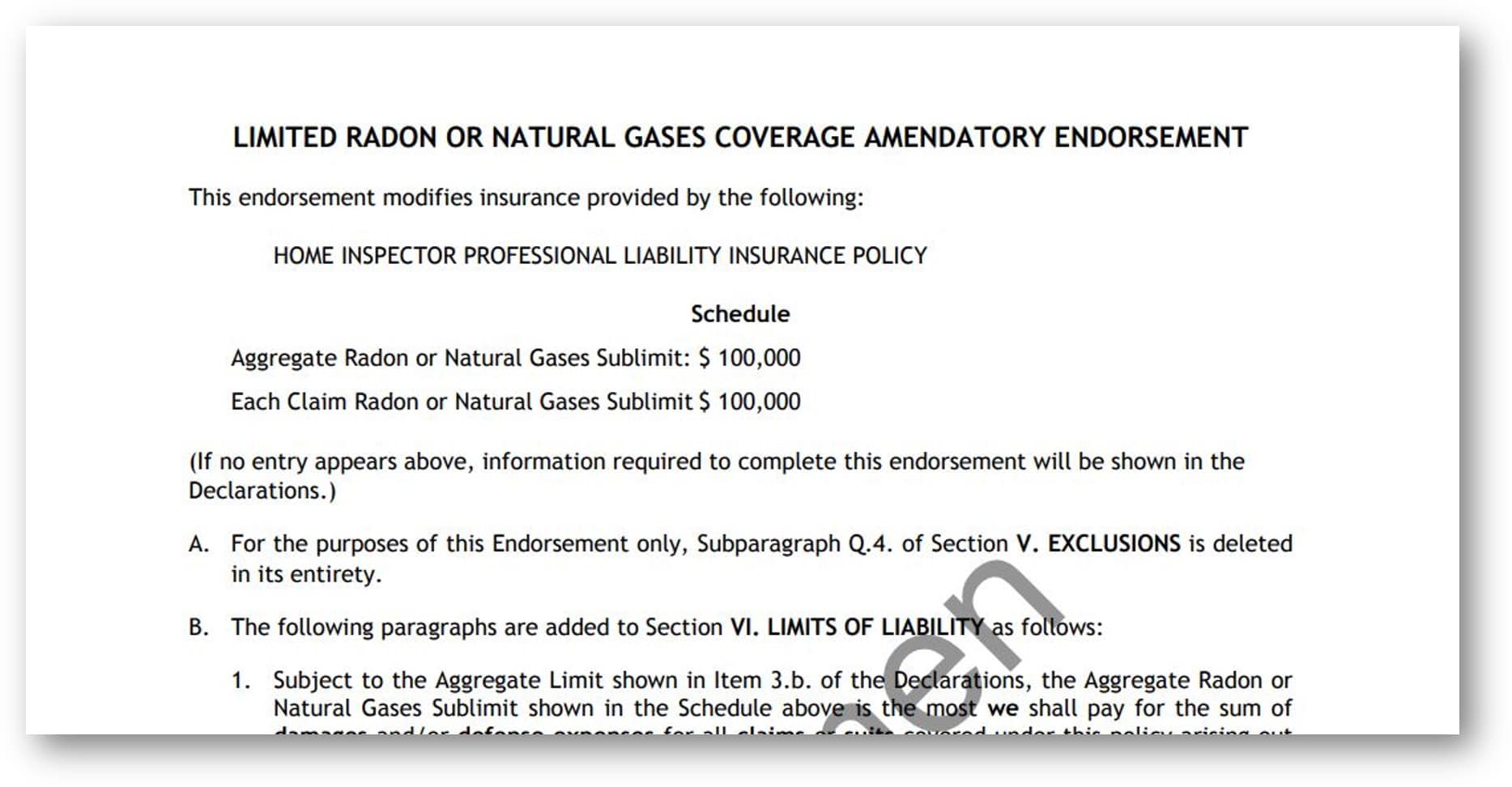
In the example above, the insurance carrier has sublimited a home inspector who’d originally purchased $1,000,000 / $1,000,000 in coverage. Note that his million-dollar limits do not apply to his radon inspections. Instead, he receives just $100,000 per claim and per policy period for radon-related issues. So, when choosing your coverage, you must be sure to take sublimits into account.
Limiting your liability against radon-related claims.
Carrying a radon endorsement is one of the most important things you can do to protect against radon-related claims. However, there are further risk management techniques you can employ to safeguard your business. Here are some suggestions from our surveyed inspectors and our claims team:
1. Encourage clients, homeowners, and real estate agents to not tamper with radon tests.
Some of the radon-related pre-claims and claims we receive have to do with testing malfunctions. In one case, homeowners opened windows during testing, resulting in fluctuating levels reported by our insured inspector and other specialists.
Consequentially, to avoid this, we recommend that inspectors explain procedures to clients and others who could unintentionally interfere with measurements. By helping everyone understand to not move monitors or alter testing conditions, you can avoid accusations from compromised testing.
2. Educate clients about radon testing results.
As Green mentioned earlier, taking radon certification courses and exams can help you educate clients about radon test results.
Patterson agrees, arguing that it’s your duty as an inspector to understand testing protocols and reports.
“Get the proper training—even if you are in an unregulated state, like we are in Tennessee,” Patterson said. “You must learn the science and the proper protocols for testing. Your clients are counting on you to provide an accurate test. And if you don’t understand radon and the proper testing protocols, you won’t be able to provide a reliable test.”
Firstly, before your clients ask questions, incorporate some basic information regarding radon and the test results. For example, Green, Faggella, and Stadther supplement their reports with the EPA’s “Consumer’s Guide to Radon Reduction: How to Fix Your Home,” which provides readers with basic information about radon mitigation and reduction. Many inspectors include an explanation of what is considered high levels of radon. This allows clients to decode the picocuries in their reports.
According to Stadther, being able to have knowledgeable conversations about radon doesn’t just lead to increased client satisfaction. As a result, it can lead to more testing requests and subsequent profit.
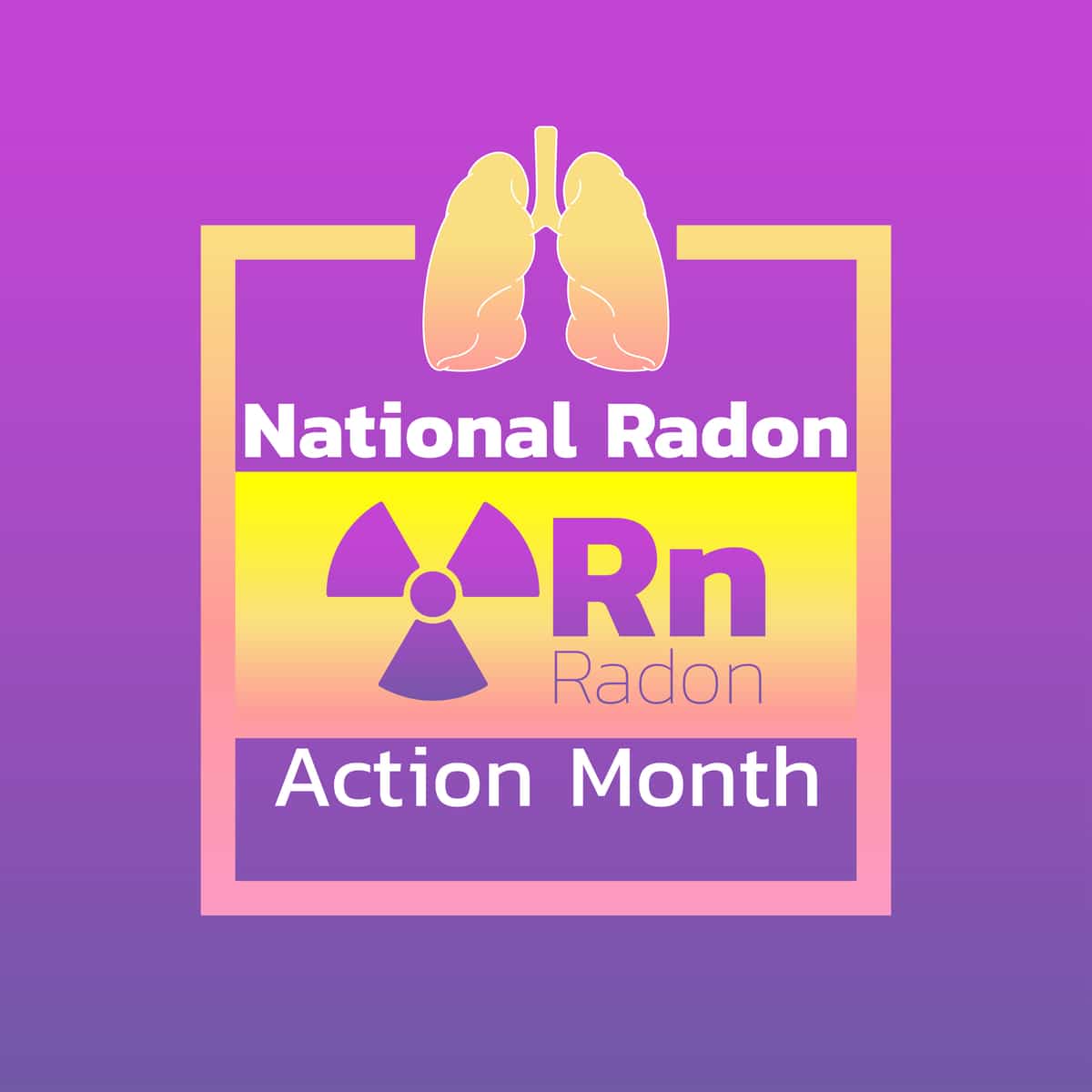
3. Help clients with high radon levels take appropriate next steps.
Every inspector we surveyed agreed that it’s important to encourage clients with high radon levels to seek mitigation. Specifically, most recommend that clients seek assistance from a qualified contractor. According to Steger, keeping his referral vague helps his clients choose the remediation company that’s right for them.
“I don’t refer specific remediators,” Steger said. “I direct [clients] to the [Pennsylvania Department of Environmental Protection] website, which has a list that they update monthly of all the licensed testers and the licensed remediators in the state. And, I leave it to the buyer to decide who they want to hire.”
For instance, if you decide to refer specific companies, request that they add you as an additional insured. This ensures that, if you are named in claim regarding their remediation services, their coverage will defend you.
(You can read more about additional insured endorsements here.)
Radon testing and your home inspections.
Is there a lot of public interest in radon in your area? Does your region have high radon levels? Do you feel that you have a duty to your clients to protect them from radon-related illnesses? Are you looking for an added revenue sources and job security for your inspection business?
If you answered “yes” to any of these questions, perhaps it’s time for your company to offer radon testing. Home inspectors can learn more about offering additional inspection services from our article “Endorsements: Spend money to make money in your home inspection business.”
Need insurance coverage for your radon or other specialty inspection services? Luckily, you can talk to an InspectorPro broker today to get the proper endorsements in place to receive coverage. If you aren’t insured with us already, you can get a no-obligation quote for errors and omissions (E&O) and general liability (GL) coverage by filling out our online application.
Note: When we originally published this article, we stated that Stanley Watras set off a radon monitor. In fact, Watras set off a radiation detector. We made this correction at 10:15 AM on the same day as publication.
This article was published in the ASHI Reporter in January 2021. See how this story appears in print below.


